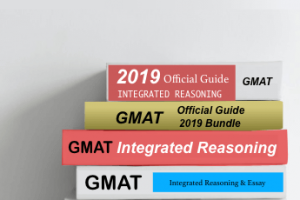
GMAT Exam Syllabus
Before reading the GMAT Exam Syllabus, know what is GMAT and the reason behind taking the GMAT Exam.
GMAT Analytical Writing Assessment Exam Syllabus

GMAT Analytical Writing Assessment Syllabus
The Analytical Writing segment will have subjects on which the applicant should write, or passage might be given on which questions will be posed. Based on the passage, the applicant should answer. The schedule for this segment is tremendous and differed as the subject of the section could be any subject of intrigue. The principle thought is to concentrate on the structure of the appropriate response and not the arguments introduced. Keep in mind, it’s anything but a trial of your sentiment yet your writing style, so it is more secure to adhere to unbiased assessment according to the GMAT Exam Syllabus.
- Argument essay
In this area, you need to examine the thinking and afterward present your argument. Keep in mind, you will be decided on how all around contemplated you locate a given argument.
- Issue essay
In this area, you need to write an essay on the issue given to you. The applicant needs to offer an input in around 600 words. The opinion can be supportive of the given articulation or applicants can offer their own input. Be that as it may, make a point to offer your input in an appropriately organized way as you will be decided on this premise.
GMAT Integrated Reasoning Syllabus

GMAT Integrated Reasoning Syllabus
The Integrated Reasoning area is the freshest expansion in the GMAT Exam Syllabus. This area tests the competitors’ capacity to assess the information introduced in chart or table organization. This segment has 12 questions of the following kind:
- Table Analysis:
This area gauges applicants’ capacity to sort and analyse a table including information, similar to a spreadsheet, to decide the significant data or the one that meets certain conditions.
- Two-Part Analysis:
Measures the competitors’ abilities to take care of complex issues. The issues can be verbal, quantitative, or a blend of both. The configuration is flexible and covers a wide scope of substance. The candidate’s ability to tackle simultaneous equations, assess compromises, and observe connections between two substances is estimated.
- Multi-Source Reasoning:
It gauges competitors’ abilities to inspect information from various sources tables, illustrations, text sections, or a mix of all the three and analyse each source of information cautiously for addressing numerous questions. The candidates will be approached to draw deductions and others may expect you to decide if information is significant. In a couple of questions, applicants should perceive inconsistencies among various sources of information.
- Graphics Interpretation:
It quantifies candidate’s capacity to interpret the data introduced in a diagram or graphical picture (scatter plot, x/y chart, bar outline, pie graph, or statistical curve distribution) to discover connections, and make deductions.
GMAT Quantitative Reasoning

GMAT Quantitative Reasoning
The Quantitative Section includes two areas, in particular Data Sufficiency and Problem Solving. In the Data Sufficiency area, there will be 18 questions and, in the Problem-Solving segment, there will be 18 questions. The questions will be target type and will have various decision answers. In this area the questions can be normal from the accompanying math syllabus:
- Problem Solving
It gauges the applicants’ abilities to utilize rationale and systematic thinking for taking care of quantitative issues.
- Data Sufficiency
It quantifies the candidate’s capacity to inspect a quantitative issue, distinguish which information is significant, and decide when there is sufficient information to take care of the issue.
The themes are additionally partitioned into the accompanying classifications:
- Geometry
- Elementary Algebra
- Arithmetic
- Ratio Proportions
- Properties of Integers
- Permutation and combinations
- Exponents and roots
- Linear equations etc.
GMAT Verbal Reasoning Syllabus

GMAT Verbal Reasoning Syllabus
This Verbal Skills area will have 36 multiple choice questions. This area is partitioned into Critical Reasoning, Reading Comprehension and Sentence Correction. This segment tests the applicants’ capacity to appreciate the composed material, read and understand the consistent connection between the focuses referenced in the passage and concepts.
- Critical Reasoning
It gauges the applicants’ expertise to make arguments, to assess arguments, and detail or assess a strategy.
- Reading Comprehension
It gauges the candidate’s aptitude to draw deductions, comprehend legitimate connections between noteworthy points, get words and proclamations, and follow the improvement of quantitative ideas. Aside from this, the applicants’ will be tried on the accompanying understanding abilities: derivation, application, fundamental thought, supporting the thought, intelligent structure, and style.
- Sentence Correction
This area estimates two wide parts of the competitors’ language capability. The main angle is to address articulation while alluding to sentences that are syntactically and fundamentally stable. The subsequent perspective is a successful articulation while alluding to sentences that adequately express a thought or relationship obviously, compactly, and linguistically.
Following areas will be covered in this Verbal Reasoning area:
- Critical thinking
- Rhetorical development of the sentences
- Sentence adjustment identified with discovering blunder or exclusion
- Reading unseen passages
- Subject-action word understanding
- Misplace modifiers
- Countable Vs Uncountable
- Parallelism
Register yourself with Anannt and ace the exam.

Recent Comments